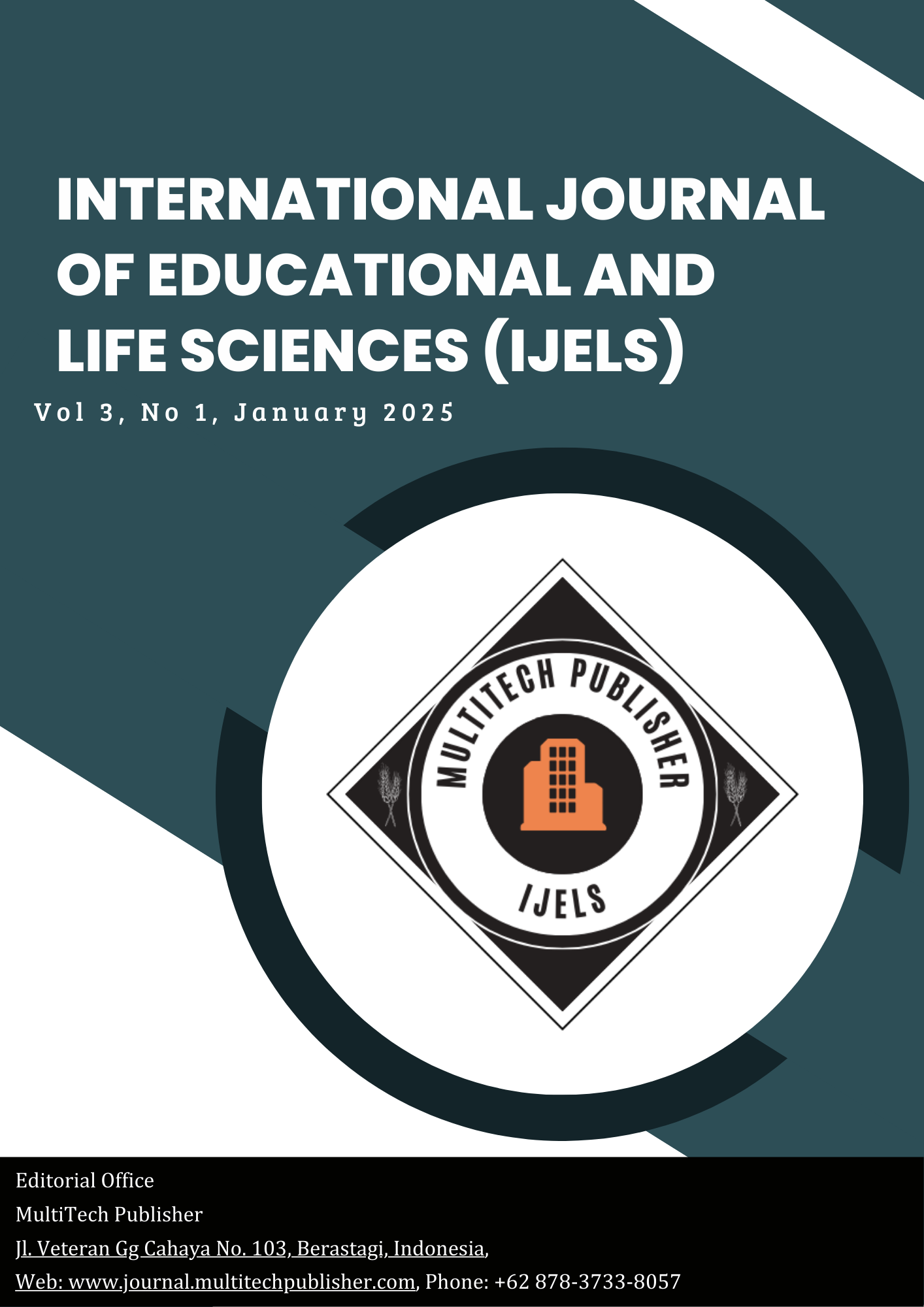Disaster Risk Reduction (DRR) Model in Senior High School: A Comparison of Tsunami Affected and Unaffected Areas in Banda Aceh City
DOI:
https://doi.org/10.59890/ijels.v3i1.130Keywords:
Disaster Risk Reduction, Tsunami, High SchoolAbstract
This study aims to analyze the implementation of the disaster Risk Reduction (DRR) model in Senior High School in Banda Aceh City in schools located in areas affected and unaffacted by the tsunami in 2024. This paper uses a qualitative approach with a comparative study design, the research was conducted through a group investigation method in four schools. The research explores students’ knowledge of DRR, including disaster experience, disaster information, participation in disaster activities, and understanding when a disaster occurs. Through the group investigation model, the research addressed the differences between schools in tsunami-affected and unaffacted areas. The result show that tsunami-affected schools have higher understanding and preparedness related to disaster risk reduction than unaffected schools, with differences in training participation and information sources.
References
Adiyoso, W., & Kanegae, H. (2013). “The Effect of Different Disaster Education Programs on Tsunami Preparedness Among Schoolchildren in Aceh, Indonesia”. Disaster Mitigation of Cultural Heritage and Historic Cities, 7, 165-172. BNPB (2008). Badan Nasional Penanggulangan Bencana
Adiyoso, W., & Kanegae, H. (2017). Tsunami resilient preparedness indicators in Aceh Province, Indonesia. International Journal of Disaster Risk Reduction, 22, 147-158.
Amri, A., Bird, D.K., Ronan, K., Haynes, K., Towers, B., (2017). “Disaster Risk Reduction Education in Indonesia: Challenges and Recommendations for Scaling Up”. Natural Hazards Earth System Science, pp 595-613
BNPB. (2017). Buku Saku “Tanggap Tangkas Tangguh Menghadapi Bencana”. Jakarta: Pusat Data, Informasi dan Humas BNPB
Bordán, S., & Petal, M. (2021). “Student Participation in School Disaster Management: A Case Study from Indonesia”. International Journal of Disaster Risk Reduction, 54, 102051.
Firdaus, M. I., & Yuliani, E. (2022). Kesesuaian Lahan Permukiman Terhadap Kawasan Rawan Bencana Longsor. Jurnal Kajian Ruang, 1(2), 216. https://doi.org/10.30659/jkr.v1i2.20030
Frankenberg, E., B.Sikoki, C. Sumantri, W. Suriastini, dan D. Thomas. (2013). Education, Vulnerability, And Resilience After A Natural Disaster. Ecology and Society, Vol. 18, No. 2. <https://doi.org/10.5751/ES-05377-180216>.
Hayudityas, B. (2020). Pentingnya Penerapan Pendidikan Mitigasi Bencana Di Sekolah untuk Mengetahui Kesiapsiagaan Peserta Didik. Jurnal Edukasi Nonformal, 1(2), 94-102.
Hoelman, Michael, B. (2016). Sustainable Development Goals Panduan Untuk Pemerintah Daerah dan Pemangku Kepentingan Daerah. s.l.: International NGO Forum on Indonesia Development.
Juwita.H. (2024). ”Tahun 2023 Aceh Dilanda 418 Bencana dengan Kerugian Rp 430”. Badan Penanggulangan Bencana Aceh. Diakses pada 02 Januari 2024, https://bpba.acehprov.go.id/berita/kategori/bencana/tahun-2023-aceh-dilanda-418-bencana-dengan-kerugian-rp-430-miliar. 31 Juli 2024
Mardiah, A., Lovett, J. C., & Evanty, N. (2019). Toward Integrated and Inclusive Disaster Risk Reduction in Indonesia: Review Of Regulatory Frameworks And Institutional Networks. In Disaster Risk Reduction in Indonesia (pp. 57-84). Springer, Cham.
Mustafa, B. (2019). Analisis Kesiapsiagaan Bencana pada Siswa dan Guru di Kota Banda Aceh. Jurnal Ilmu Kebencanaan, 6(2), 67-75.
Oktari, R. S., Shiwaku, K., Munadi, K., & Shaw, R. (2018). Enhancing Community Resilience Towards Disaster: The Contributing Factors of The School-Community Collaborative Network In The Tsunami Affected Area In Aceh. International Journal of Disaster Risk Reduction, 29, 3-12.
Oktari, R. S., Shiwaku, K., & Shaw, R. (2018). Tsunami school program: Enhancing disaster preparedness in Banda Aceh, Indonesia. Natural Hazards, 91(3), 1085-1104.
Qurniawan, M. (2014). "Pengembangan Model Sekolah Aman Bencana (SAB) di Indonesia". Jurnal Pendidikan Islam, Vol. 4, No. 2, pp. 147-160.
Rafliana, I. (2021). School-based disaster preparedness: A case study from Aceh, Indonesia. International Journal of Disaster Risk Reduction, 53, 102004.
Rahma, A. (2018). Implementasi Program Pengurangan Risiko Bencana(PRB) Melalui Pendidikan Formal. Jurnal VARIDIKA, 30(1), 1–11. https://doi.org/10.23917/varidika.v30i1.6537
Sakurai, A., Bisri, M. B. F., Oda, T., Oktari, R. S., Murayama, Y., & Affan, M. (2018). Exploring Minimum Essentials For Sustainable School Disaster Preparedness: A Case Of Elementary Schools In Banda Aceh City, Indonesia. International Journal of Disaster Risk Reduction, 29, 73-83
Setiawan., Akbar, K. (2021). Pengembangan Model Sekolah Siaga Bencana Melalui Integrasi Pengurangan Risiko Bencana Dalam Kurikulum. Tersedia di http://staffnew.uny.ac.id/ diakses pada tanggal 27 Februari 2024.
Shaw, M. E. (1976). Group Dynamics: The Psychology of Small Group Behavior. McGraw-Hill.
UNISDR. (2009). UNISDR Terminology on Disaster Risk Reduction. United Nations International Strategy for Disaster Reduction.
Wicaksono, F. A., & Sibuea, R. P. (2022). Efektivitas Program Satuan Pendidikan Aman Bencana Di Sma Negeri 1 Cangkringan Kabupaten Sleman Provinsi Daerah Istimewa Yogyakarta. Jurnal Pemerintahan Dan Keamanan Publik (JP Dan KP), 4(2), 63–73. https://doi.org/10.33701/jpkp.v4i2.2769






